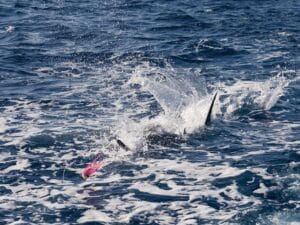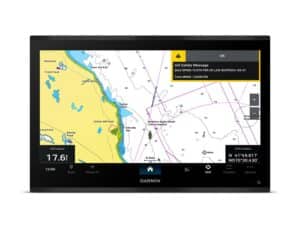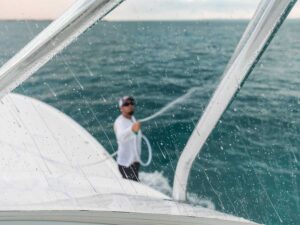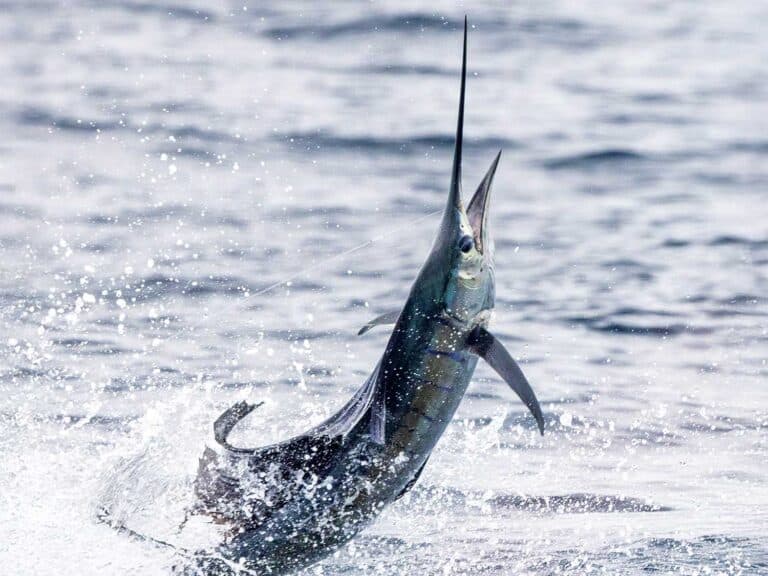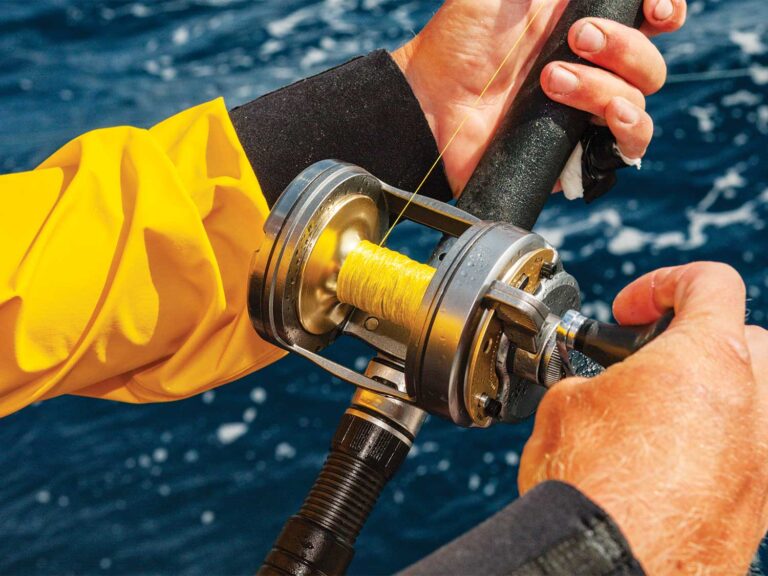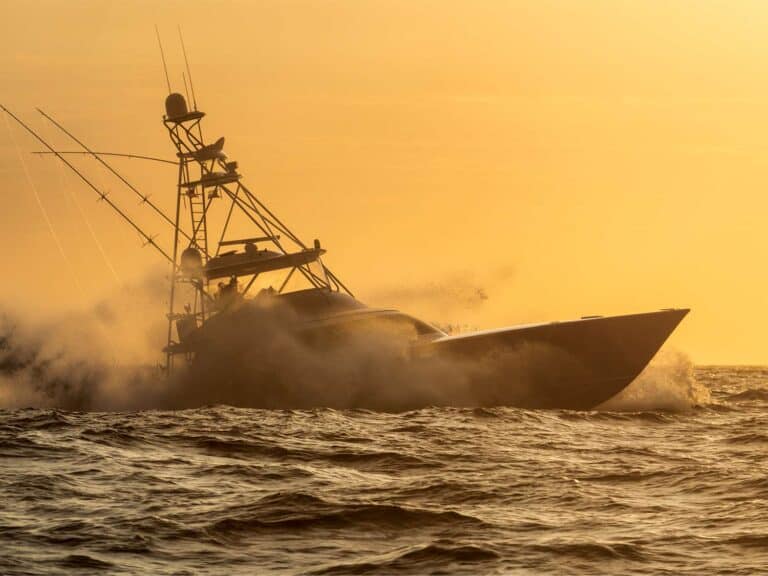
So much success in big-game fishing directly depends on keeping a sharp eye out on the water and reacting quickly to a fish in the spread. About a year ago, Marlin had a chance to look at Garmin’s somewhat quietly introduced Panoptix side-scanning sonar, designed to give a real-time view forward for navigation or sideways for shallow-water fishing. Panoptix has a range of 300 feet from its 417-kHz transducer, which immediately got my gears turning. Could side-scanning sonar be useful for monitoring a spread of lures or natural baits behind a battlewagon to give a heads-up on any billfish approaching from below or behind the spread?
Real-Time Sonar
During a recent offshore trip off Miami, we watched both our chirp sonar for a chronological view of the water and the Panoptix DownVü for an immediate image of fish entering the strike zone directly below us. Fish were clearly visible entering the Panoptix array, unmistakably indicated as bright red targets passing through the flat, fanlike, downward beam of the transducer.
David Dunn, senior manager of marine sales and marketing at Garmin International, says the bass anglers who designed Panoptix hadn’t considered the application of watching for moving targets in the water below a spread trolled behind the boat.
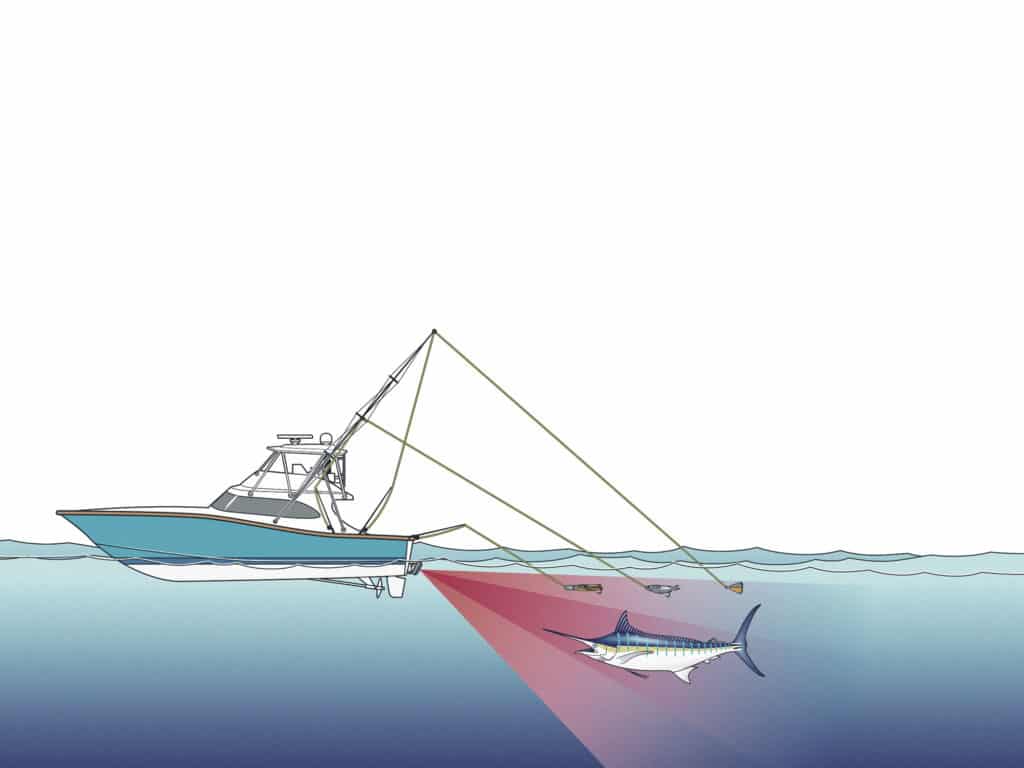
Technological Changes
Well, certainly, there are challenges to it: First, this application likely will not work well with outboards or sterndrives that route their exhaust below the surface: The bubble trail is apt to wipe out any fish target picked up by the sonar. Second, on an inboard, the exhaust is at the surface, and to watch a spread of lures dragged in that clutter offers some clear problems.
However, mounting that Panoptix ForwardVü transducer on the transom just above the keel and facing aft has some promise. And it’s not without precedent.
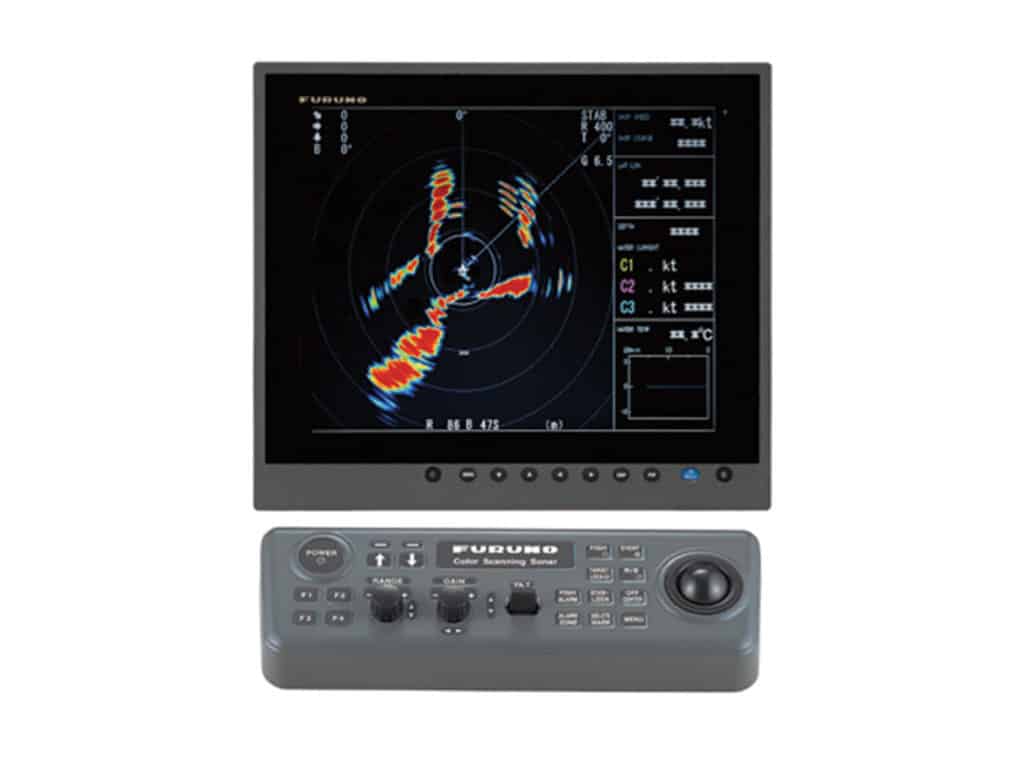
360 Degrees of Live Visibility
Consider a product introduced by Furuno in 1974: Omni Sonar. Its transducer is mounted on a shaft that extends through the keel ahead of the running gear. It deploys through a steel hull tube, almost like a reverse periscope; like a periscope, it can be rotated to watch the water in any direction.
Today’s Omni is more powerful, and it’s easier to install and operate, but it’s still a pricey black-box device. Its circular array of transducer elements scans 360 degrees around the boat, out to 2,000 meters. You need a separate monitor to display this mac-daddy’s signal — it won’t work on a TZtouch — and many commercial skippers are known to connect Omni to a computer monitor.
Done Deal‘s Jason Buck is a tournament-winning skipper in the Gulf of Mexico, and he uses Furuno’s Omni on his boat to gain an additional advantage in the Gulf’s highly competitive blue marlin-tournament circuit.
“I don’t really watch my baits on it,” he says. “But it’s great for scanning around me to see if the water has anything going on.” If he doesn’t see baitballs or other living signs of activity in the water, Buck passes through quickly, or he even picks up and runs.
“It mainly lets me know if I’m working active water,” Buck says. But he has seen some fish hit on the Omni. “When I make a turn, I can usually see my outrigger baits,” he says. “And I’ve seen fish approach them.”
A Different Strategy
Perhaps the most interesting application of this live-view technology is one we explored with Garmin’s Dunn.
Panoptix sonar will display on most Garmin multifunction displays. The trick is mounting the transducer so that its array is targeted outward in a wide-angle arc. Most inshore anglers mount it on their trolling motor and rotate it as they steer, peering into the water around their boat and toward structure. As yet, there is no “staff” for extending it from the transom of a sport-fisher or a shaft system for extending it through the keel.
We described our goal to monitor the water below trolled baits for a live view of the water and the fish in it, and the discussion quickly settled on the DownVü sonar enabled by the PS60 transducer, plus the LiveVü Forward using a PS31 transducer. The latter offered the most exciting potential — when aimed aft.
Mounting it on the transom just above the keel keeps the transducer in solid water when trolling and below the exhaust bubbles of most inboards. With its wide 120-degree beam, you can monitor the water below your baits and even direct the beam up or down.
“This was designed by bass fishermen who probably never thought of trolling for marlin,” says Dunn. “But when people devise new applications for technology like this, we get excited.”
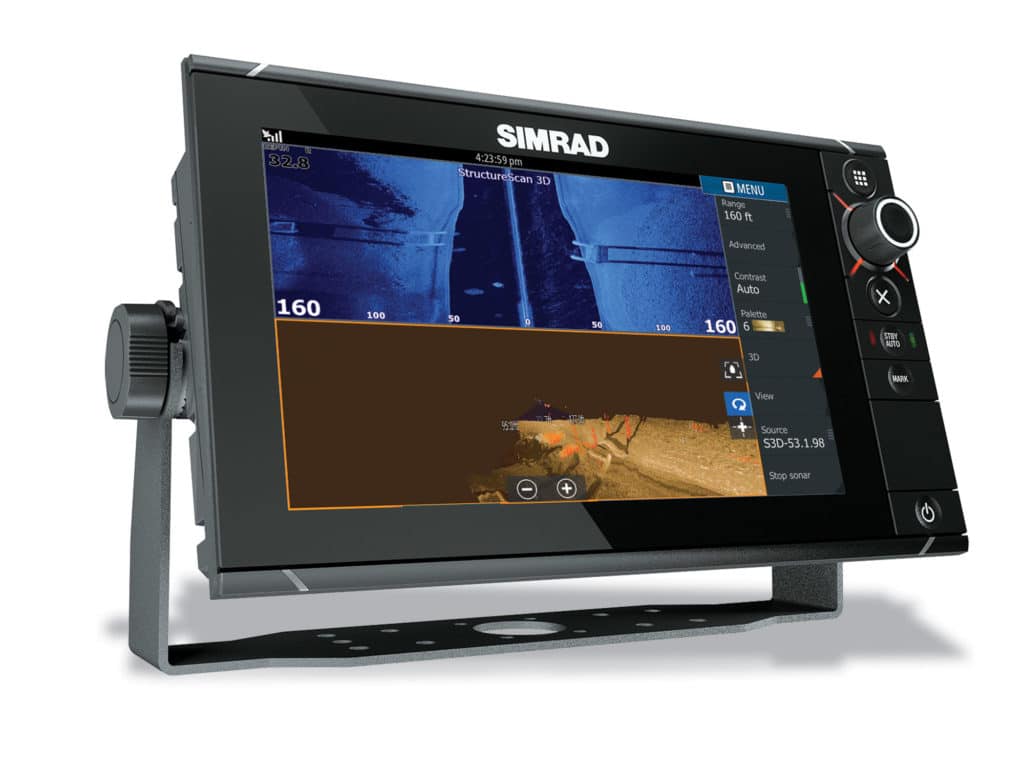
Additional Side-Scanning Options
While Simrad’s StructureScan or StructureScan 3D paints a chronological image of water already passed, the information displayed assures that the waters are active. Skippers trolling among oil rigs are constantly examining the structures on side-scanning sonar to get a feel for the presence of big billfish. StructureScan 3D is invaluable in proving the current fishing grounds are lively with bait or fish on rigs, even if the -bottom surpasses its 600-foot range.
Raymarine also offers SideVision (whose range is also 600 feet) and DownVision. The latter provides a wide-angle look at the water from a vertical, look-down perspective. The presence of life — or absence of it — is quickly revealed by alternating between the SideVision and DownVision functions.
When so much rides on the result of one bite, maybe directional sonars like Garmin’s ForwardVü and its competitors can give us an edge.

